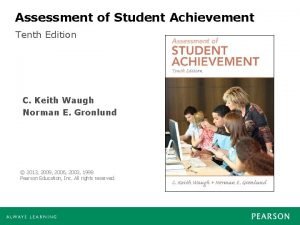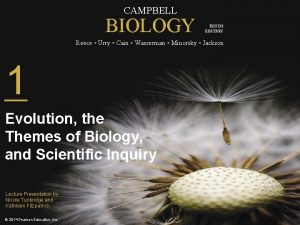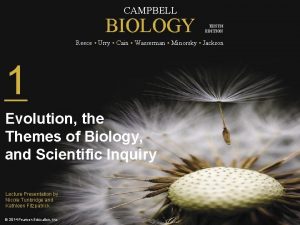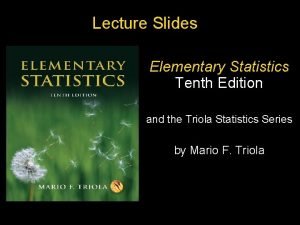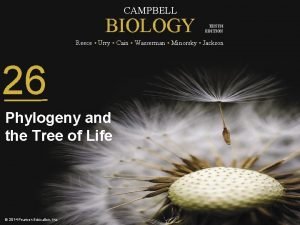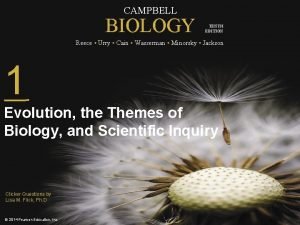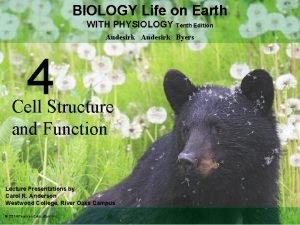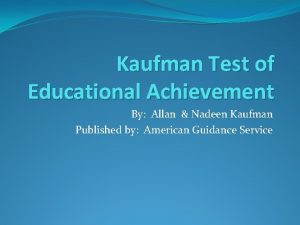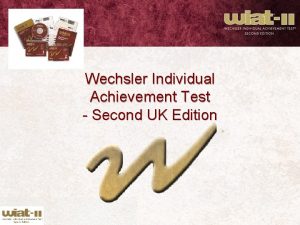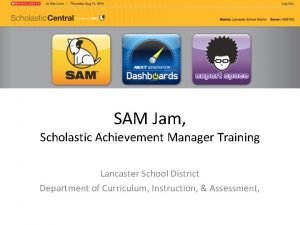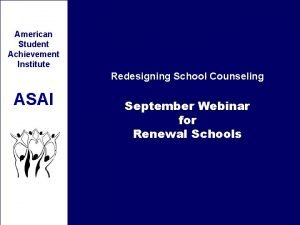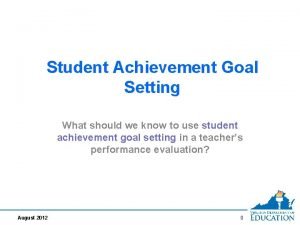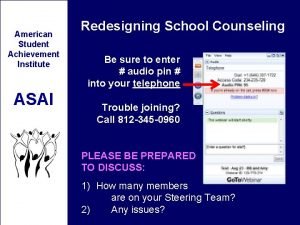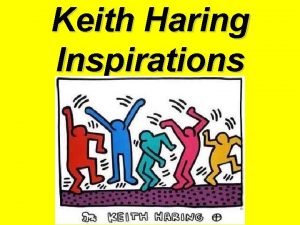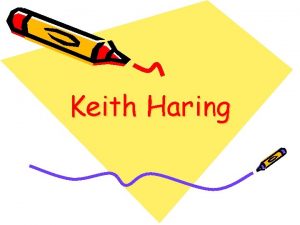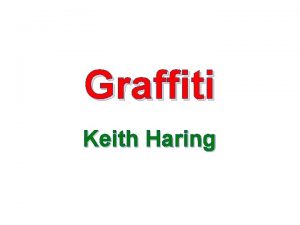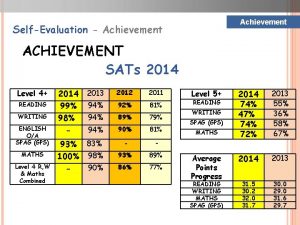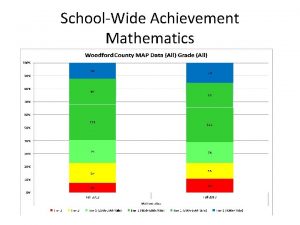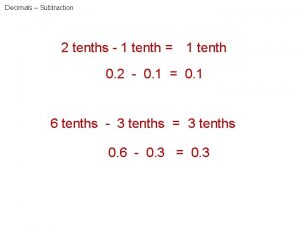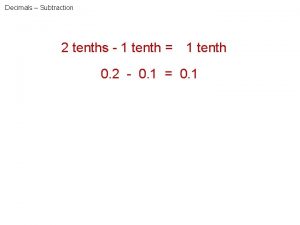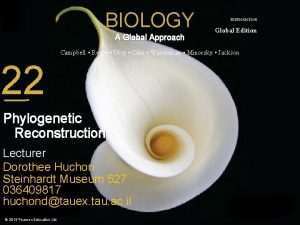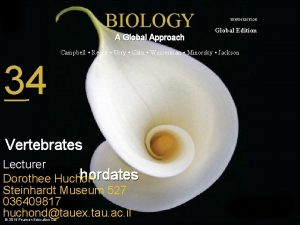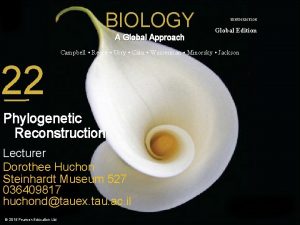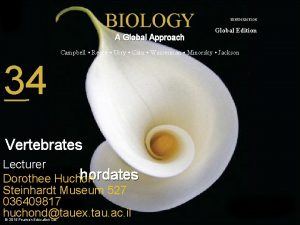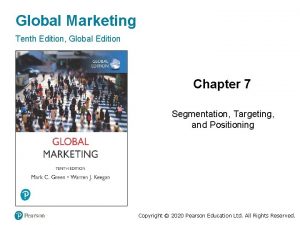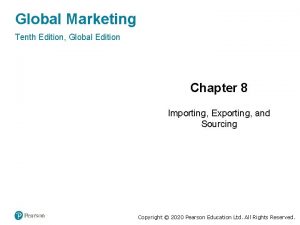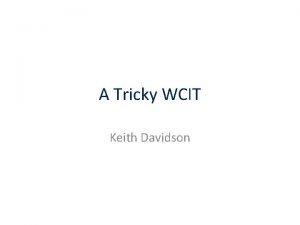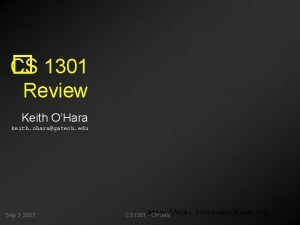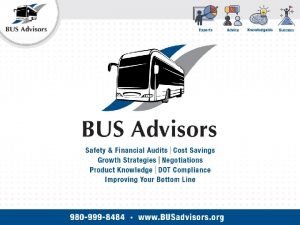Assessment of Student Achievement Tenth Edition C Keith


























- Slides: 26

Assessment of Student Achievement Tenth Edition C. Keith Waugh Norman E. Gronlund © 2013, 2009, 2006, 2003, 1998 Pearson Education, Inc. All rights reserved.

Chapter 1 Introduction to Assessment Achievement Assessment and Instruction Waugh/Gronlund Assessment of Student Achievement, 10 e © 2013 Pearson Education, Inc. All rights reserved.

Pike Place Fish Market Seattle, Washington (Article Review) Waugh/Gronlund Assessment of Student Achievement, 10 e © 2013 Pearson Education, Inc. All rights reserved.

Listen and Summarize Waugh/Gronlund Assessment of Student Achievement, 10 e © 2013 Pearson Education, Inc. All rights reserved. 1 -3

Question n You read an article and summarized it. n You listened to a song and summarized it. n Which assessment did you enjoy the most? n What factors were involved? (learning styles, assessment type…etc. ) Waugh/Gronlund Assessment of Student Achievement, 10 e © 2013 Pearson Education, Inc. All rights reserved. 1 -4

When you hear the word assessment, what comes to mind? Waugh/Gronlund Assessment of Student Achievement, 10 e © 2013 Pearson Education, Inc. All rights reserved. ? 1 -5

Assistant Administrators in making instruction decisions Allow policymakers to evaluate the effectiveness of programs Assessment Why Assess? Monitor Student Learning Improve Teacher Instruction Waugh/Gronlund Assessment of Student Achievement, 10 e © 2013 Pearson Education, Inc. All rights reserved. 1 -6

Purpose of Assessment for Educators n Provide feedback to teachers n Evaluate a curriculum/unit’s strength and weakness n Improve teaching n Monitor standards over time Waugh/Gronlund Assessment of Student Achievement, 10 e © 2013 Pearson Education, Inc. All rights reserved. 1 -7

Assessment Can Be… n Diagnostic (Pretest) n Formative (During Instruction) n Summative (End of Instruction) Waugh/Gronlund Assessment of Student Achievement, 10 e © 2013 Pearson Education, Inc. All rights reserved. 1 -8

Common Types of Assessments n Performance – requires students to “perform” as task to demonstrate their understanding: write a story, give a speech, conduct an experiment…etc. n Alternative – prove an alternative to traditional paper and pencil tests (may be performance based) n Authentic – “real life” tasks: solving problems that exist in the real world. Waugh/Gronlund Assessment of Student Achievement, 10 e © 2013 Pearson Education, Inc. All rights reserved. 1 -9

Assessments should… …be used to improve learning rather than threaten or label students Discuss, do you think teacher spend as much time as they should on the assessment process? Waugh/Gronlund Assessment of Student Achievement, 10 e © 2013 Pearson Education, Inc. All rights reserved. 1 -10

What Is Measurement? n The process of assigning numbers to individuals or their characteristics n Commonly provided to the students as a grade Waugh/Gronlund Assessment of Student Achievement, 10 e © 2013 Pearson Education, Inc. All rights reserved. 1 -11

Assessment DRIVES Instruction Waugh/Gronlund Assessment of Student Achievement, 10 e © 2013 Pearson Education, Inc. All rights reserved. 1 -12

Assessment in the Instructional Process n Assessment is a recursive process n Assessment is fully integrated with instruction n Plans for assessment should be made during the planning for instruction Waugh/Gronlund Assessment of Student Achievement, 10 e © 2013 Pearson Education, Inc. All rights reserved. 1 -13

Questions to Ask n What are the intended outcomes? (Content Standards/Objectives/Goals) n How will you know whether the students achieved the learning outcomes? (discuss) Waugh/Gronlund Assessment of Student Achievement, 10 e © 2013 Pearson Education, Inc. All rights reserved. 1 -14

Assessment in the Instructional Process n Planning of Instruction n Define the intended learning outcomes of instruction n Specify how student achievement of learning outcomes will be determined Waugh/Gronlund Assessment of Student Achievement, 10 e © 2013 Pearson Education, Inc. All rights reserved. 1 -15

Assessment in the Instructional Process (continued) n Beginning of Instruction (Placement/Pretest Assessment) n Purpose: n. To determine if students have the prerequisite skills n. To determine if students have already achieved intended outcomes Waugh/Gronlund Assessment of Student Achievement, 10 e © 2013 Pearson Education, Inc. All rights reserved. 1 -16

Before Instruction Waugh/Gronlund Assessment of Student Achievement, 10 e © 2013 Pearson Education, Inc. All rights reserved. 1 -17

Assessment in the Instructional Process (continued) n During Instruction (Formative and Diagnostic Assessment) n Purpose: n To determine which learning tasks the students are progressing satisfactorily (Formative) n To determine which students need remedial work in particular material (Diagnostic) n Used to adapt goals/objectives (Formative) Waugh/Gronlund Assessment of Student Achievement, 10 e © 2013 Pearson Education, Inc. All rights reserved. 1 -18

During Instruction Waugh/Gronlund Assessment of Student Achievement, 10 e © 2013 Pearson Education, Inc. All rights reserved. 1 -19

Assessment in the Instructional Process (continued) n End of Instruction n Summative Assessment n. Purpose: n. To determine which students have mastered material and should move on to next course n. To determine what grade should be assigned to each student n. Predict future success Waugh/Gronlund Assessment of Student Achievement, 10 e © 2013 Pearson Education, Inc. All rights reserved. 1 -20

After Instruction Waugh/Gronlund Assessment of Student Achievement, 10 e © 2013 Pearson Education, Inc. All rights reserved. 1 -21

Other Ways Assessment Can Aid Learning n To increase student motivation n To increase retention and transfer of learning n Provides student self-assessment n Provides feedback concerning needed changes to curriculum Waugh/Gronlund Assessment of Student Achievement, 10 e © 2013 Pearson Education, Inc. All rights reserved. 1 -22

Student Self-Assessment n Enables students to better understand themselves, develops self-awareness n Identifies misconceptions that need correcting n Sometimes students “think” they know material when they do not Waugh/Gronlund Assessment of Student Achievement, 10 e © 2013 Pearson Education, Inc. All rights reserved. 1 -23

Other Points to Ponder n Students should not be surprised by the format of the assessment Waugh/Gronlund Assessment of Student Achievement, 10 e © 2013 Pearson Education, Inc. All rights reserved. 1 -24

Reading Guide #1 Waugh/Gronlund Assessment of Student Achievement, 10 e © 2013 Pearson Education, Inc. All rights reserved. 1 -25
 To assess achievement at the end of instruction is
To assess achievement at the end of instruction is Campbell biology tenth edition
Campbell biology tenth edition Campbell biology tenth edition
Campbell biology tenth edition Campbell biology tenth edition
Campbell biology tenth edition Elementary statistics tenth edition
Elementary statistics tenth edition Digital fundamentals by floyd 10th edition
Digital fundamentals by floyd 10th edition Corporate finance tenth edition
Corporate finance tenth edition Psychology tenth edition in modules
Psychology tenth edition in modules Introduction to genetic analysis tenth edition
Introduction to genetic analysis tenth edition Corporate finance tenth edition
Corporate finance tenth edition Corporate finance tenth edition
Corporate finance tenth edition Corporate finance tenth edition
Corporate finance tenth edition Corporate finance tenth edition
Corporate finance tenth edition Campbell biology tenth edition
Campbell biology tenth edition Biology tenth edition
Biology tenth edition Clorosplastos
Clorosplastos Biology tenth edition
Biology tenth edition Kaufman test of educational achievement pros and cons
Kaufman test of educational achievement pros and cons Wechsler individual achievement test second edition
Wechsler individual achievement test second edition Sam reading inventory
Sam reading inventory American student achievement institute
American student achievement institute Student achievement goals
Student achievement goals American student achievement institute
American student achievement institute Contoh achievement test
Contoh achievement test Using mis 10th edition
Using mis 10th edition Using mis 10th edition
Using mis 10th edition The tenth man graham greene summary
The tenth man graham greene summary
